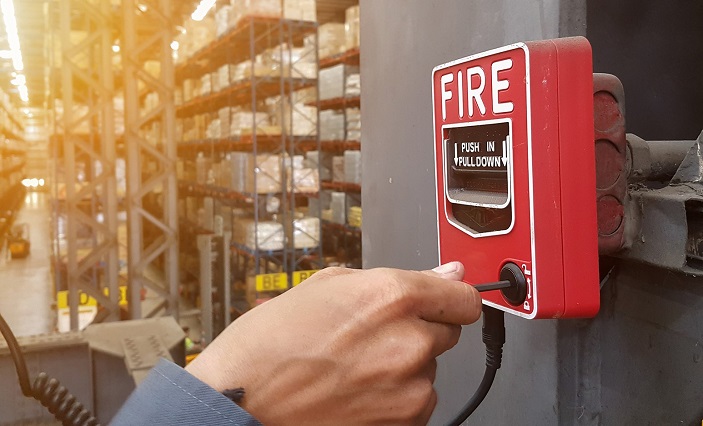Efficient Fire Protection Systems: Installing Vital Safety Measures
Efficient fire protection systems are crucial for safety. Discover key measures to install and maintain effective systems.
In today’s world, safety is paramount, and one of the most critical aspects of safety in buildings is fire protection.
Fire protection systems are not just a regulatory requirement; they are vital in preventing loss of life, property damage, and business interruption.
This blog post delves into efficient fire protection systems and the essential measures to ensure safety.
Understanding Fire Protection Systems
Fire protection systems can be categorized into two main types: active and passive systems. Active systems involve components that must act in response to a fire, such as sprinklers, fire alarms, and extinguishers. Passive systems refer to the building’s infrastructure designed to contain or slow the spread of fire, including fire-resistant walls, floors, and doors.
Integrating Wind Power with Fire Protection Systems
Incorporating renewable energy sources like wind power into building designs not only promotes sustainability but also boosts the effectiveness of fire protection systems. Wind power options, like wind turbines and small wind electric systems, can be hooked into a building’s energy grid to provide a reliable, clean energy source. This steady power supply is crucial for keeping active fire protection systems running, even during power outages.
Plus, using wind power cuts down on reliance on traditional power sources that might fail during emergencies, enhancing the building’s overall safety. As wind power becomes more common, figuring out how it can support and improve fire protection measures will be key to developing more efficient and reliable systems.
Active Fire Protection Systems
1. Sprinkler Systems
Sprinkler systems are perhaps the most recognized form of active fire protection. They are designed to detect heat from a fire and automatically release water to suppress it. Sprinklers can be found in many commercial and residential buildings due to their reliability and effectiveness.
To ensure efficiency, regular maintenance and inspections are necessary. This includes checking for blockages, corrosion, or any issues that may hinder the system’s performance.
2. Fire Alarms
Fire alarms play a crucial role in early detection and warning. Modern fire alarm systems are sophisticated and can detect smoke, heat, or even gas leaks. They provide occupants with early warning, allowing for timely evacuation and alerting emergency services.
Integration with other building systems, such as HVAC and security systems, can enhance the overall safety and efficiency of fire alarms.
3. Fire Extinguishers
Fire extinguishers are an essential component of an active fire protection system. They provide a first line of defense in combating small fires and preventing them from escalating. Proper placement, regular maintenance, and training on how to use them effectively are crucial for their efficiency.
Passive Fire Protection Systems
1. Fire-Resistant Building Materials
Using fire-resistant materials in construction is a fundamental aspect of passive fire protection. Materials such as fire-rated doors, walls, and ceilings help contain the fire to its point of origin, buying valuable time for evacuation and fire-fighting efforts.
2. Compartmentalization
Compartmentalization is the practice of dividing a building into smaller sections or compartments using fire-resistant barriers. This strategy limits the spread of fire and smoke, making it easier to control and extinguish. It also provides safe escape routes for occupants.
3. Firestopping
Firestopping involves sealing openings and joints in fire-resistance-rated walls and floors to prevent the spread of fire and smoke. This measure is particularly important in areas where pipes, cables, and ducts penetrate walls and floors.
Key Considerations for Efficient Fire Protection
1. Compliance with Regulations
Adhering to local fire safety regulations and codes is non-negotiable. These regulations are designed to ensure minimum safety standards and are often based on rigorous testing and analysis. Regular audits and inspections can help maintain compliance and identify any areas that need improvement.
2. Regular Maintenance and Testing
Maintenance and testing of fire protection systems are critical to ensure their reliability. This includes inspecting sprinkler systems, testing fire alarms, and servicing fire extinguishers. Any identified issues should be addressed promptly to avoid compromising safety.
3. Employee Training and Awareness
Training employees on fire safety procedures and the proper use of fire protection equipment is essential. Regular fire drills and training sessions can ensure that everyone knows what to do in the event of a fire, reducing panic and improving evacuation efficiency.
4. Integration with Building Management Systems
Integrating fire protection systems with other building management systems, such as HVAC, security, and power management, can enhance overall efficiency. For instance, shutting down HVAC systems during a fire can prevent the spread of smoke, while integration with security systems can facilitate coordinated responses.
The Role of Technology in Fire Protection
Advancements in technology have significantly improved the efficiency and effectiveness of fire protection systems. Smart fire alarms with IoT connectivity can provide real-time monitoring and alerts, while automated sprinkler systems can be controlled remotely. Artificial intelligence and data analytics can predict potential fire hazards and optimize maintenance schedules.
Conclusion
Investing in efficient fire protection systems is a critical aspect of building safety. By combining active and passive measures, adhering to regulations, and leveraging technology, businesses can protect lives, property, and ensure continuity. Regular maintenance, employee training, and integration with other building systems are key to maintaining an effective fire protection strategy.

